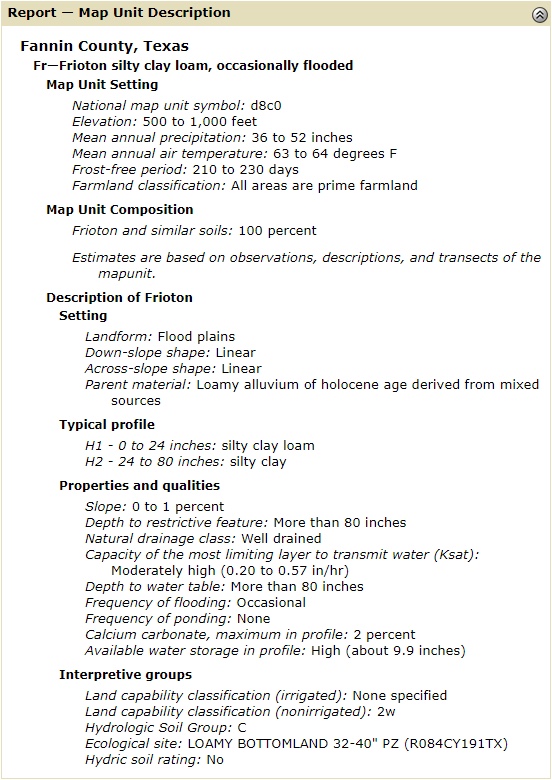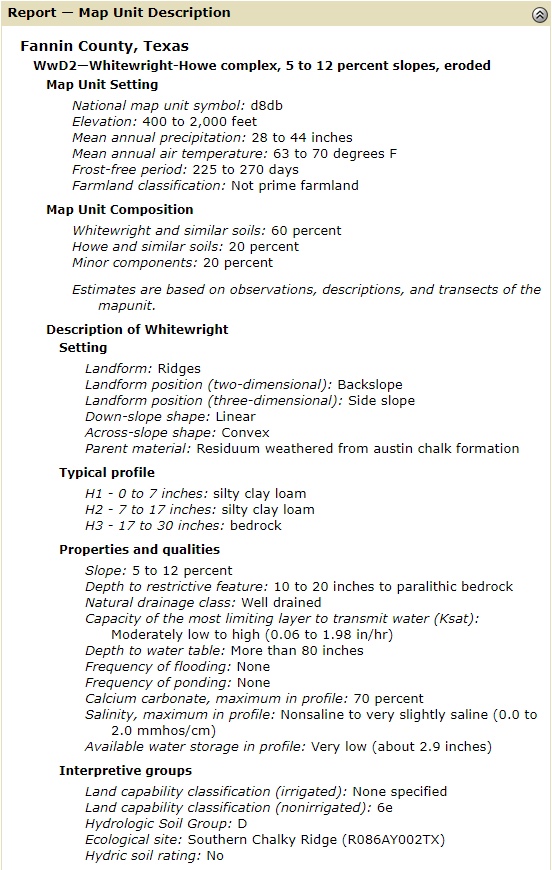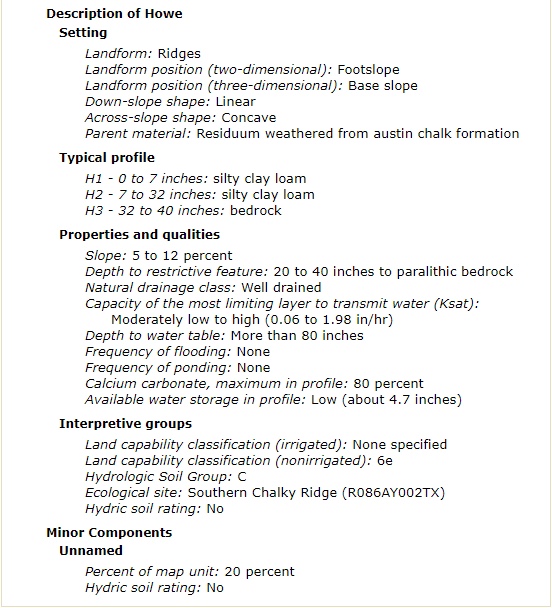IkemanTx
5 year old buck +
As it gets closer to being able to start habitat work on the family 40, I am getting more and more in depth with my research. One thing I keep seeing is to avoid clay soils.
There are 2 soil types on the family farm according to the NRCS soil survey maps.
The lower lying area is classified as Frioton Silty Clay Loam

The higher ground (just a 20-30’ max elevation change) is categorized as Whitewright-Howe complex.


I was hoping to include multiple varieties of Chestnuts and Allegheny Chinkapins. Are these soils at all compatible with them? If they just WONT grow in black clay soils I would prefer to spend the money on things that will.
Some of the native trees we have on the place already are burr oaks, red oaks, hackberry, western red cedar, Osage orange, persimmon, post oak, winterberry, cottonwood (along the creek), and Mexican plum.
Sent from my iPhone using Tapatalk
There are 2 soil types on the family farm according to the NRCS soil survey maps.
The lower lying area is classified as Frioton Silty Clay Loam

The higher ground (just a 20-30’ max elevation change) is categorized as Whitewright-Howe complex.


I was hoping to include multiple varieties of Chestnuts and Allegheny Chinkapins. Are these soils at all compatible with them? If they just WONT grow in black clay soils I would prefer to spend the money on things that will.
Some of the native trees we have on the place already are burr oaks, red oaks, hackberry, western red cedar, Osage orange, persimmon, post oak, winterberry, cottonwood (along the creek), and Mexican plum.
Sent from my iPhone using Tapatalk

